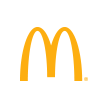Here's how (and why) we're evolving our Happy Meals around the world
October 21, 2020
We’ve seen how our efforts have helped provide families around the world access to more balanced Happy Meal options made with quality ingredients – and that’s something we’re proud of.
At McDonald’s, we help feed more than 40,000 communities around the world – and we’ve worked hard over the years to evolve our Happy Meal and offer more balanced options for our youngest guests.
Did you know that we’ve sold over 2.5 billion Happy Meal items containing fruit, vegetable, low fat dairy, water, lean protein or whole grains since 2018?
It’s part of our work with the Alliance for a Healthier Generation, which we expanded two years ago by unveiling a brand new set of Global Happy Meal Goals.
By the end of 2022, we’re aiming to:
It’s 2020, which means we’re halfway to our 2022 deadline – and we’re excited to share the progress we’ve made towards all five of these goals. We know there’s more work to be done, but already we’ve seen how our efforts have helped provide families around the world access to more balanced Happy Meal options made with quality ingredients – and that’s something we’re proud of.
"Since announcing our Global Happy Meal Goals in 2018, we’re proud of the progress we’ve made in providing families around the world access to more balanced Happy Meal Menu options,” said Julia Braun, McDonald’s Director of Global Nutrition. “We know how important it is to give parents menu choices they can feel good about feeding their children. We recognize there’s always more work to do in this space, and we remain committed to using our size and scale to support children and families as we continue to evolve the Happy Meal.”
(One thing to note, before we get into the details: These goals apply to all our markets around the world with measurement and reporting of progress among the 20 major markets* that represent nearly 85% of McDonald’s global sales).
"Across the 20 major markets, half of all beverages sold in 2019 were water, milk or juice."
Goal #1: It’s all about balance. In 2018, we worked with third-party nutrition experts to establish global nutrition criteria for the Happy Meal for the first time. Globally, an average of 43% of Happy Meal bundles met the Nutrition Criteria across the 20 major markets in 2019, increasing our global criteria by 11%, up from 32% in 2018. We continue to make nutritional improvements and offer a variety of options that contribute to recommended food groups, such as fruits, vegetables and low-fat dairy. For instance, in 2019, McDonald’s China revamped its Happy Meal Bundle offering, which now automatically includes a fruit or vegetable, as the second side.
Goal #2: Simplify ingredients. Our global team of food experts is always thinking of ways to evolve our menu to prioritize customers’ tastes and preferences. This can be done in a number of ways from reformulating menu items to introducing new innovations. We're proud to share that as of early 2020, 93% of Happy Meal menu items across the 20 major markets have no artificial flavors, added colors from artificial sources, or artificial preservatives that could be feasibly reduced.
Goal #3: Transparency is key. We know that transparency around Happy Meal nutrition information is important for our customers to make informed choices. In 2019, 60% of the 20 major markets provided complete Happy Meal nutrition information on McDonald’s owned websites and mobile apps used for ordering, and many markets have partial nutrition information on their website, working towards 100%. In the McDonald’s France mobile app, for instance, users can access nutrition information for Happy Meal items within the ordering sequence in just one tap.
Goal #4: Market responsibly. At McDonald’s, we’re committed to responsibly marketing to children, and by the end of 2022, we’re aiming to ensure all Happy Meal bundles advertised to children meet McDonald’s new global nutrition criteria and continue to meet any existing local or regional advertising pledges with respect to marketing to children. 83% of all Happy Meal bundles shown in children’s ads across the 20 major markets met the global nutrition criteria in 2019, on average, and we are actively working to bring that up to 100%.
Goal #5: Help increase purchase of items containing recommended food groups. We’re using innovative marketing to promote balanced Happy Meal choices. It's working: 80% of the 20 major markets sold an increased share of Happy Meal items containing recommended food groups in 2019, compared to 2018. What are some of these innovative marketing techniques, you ask? Think prominently featuring balanced options on our kiosks and using creative packaging to help promote balanced options. For example, McDonald’s Spain changed its Happy Meal packaging to feature Melon Slices in August 2019. Consequently, the share of customers selecting Melon Slices increased by 29% compared to August 2018.
Over the next two years, we’ll continue to build on the all the work that’s been done around the world to bring balanced options to Happy Meals. Check back in 2022 to see our final results.
"When access to balanced food options is more important than ever, we applaud McDonald’s for their ongoing commitment to progress, and we look forward to continuing to play a critical role in facilitating their completion of all five Global Happy Meal Goals by the end of 2022,” says Kathy Higgins, CEO of the Alliance for a Healthier Generation.
To read the report in its entirety, click here.
*The 20 major markets include: Argentina, Australia, Austria, Brazil, Canada, China, France, Germany, Italy, Japan, Netherlands, Poland, Russia, Spain, Sweden, Switzerland, the United Kingdom, and the United States.

%20Unknown%20copy:hero-desktop?resmode=sharp2)